Bonsai Types
There are many bonsai types. If you’re a beginner, it’s best to start with one that is hardy and easy-to-care for like the ficus tree or juniper.
As your experience grows, try more exotic species such as Japanese maple or weeping fig. Follow these tips, and soon you’ll have an army of exquisite miniature plants!
There are many types of bonsai trees, but the most common ones are:
The Chinese Elm – popular bonsai types found everywhere

The first bonsai type we’ll discuss is the Chinese elm.
The Chinese Elm is a fast-growing tree that can be shaped into an interesting bonsai shape with its natural curves.
Although chinese elm bonsai are ideal for beginners, they also allow more experienced hobbyists to try new techniques.
Sometimes chinese elms will have multiple trunks growing from the same base. This makes for an interesting looking specimen, as it creates a very natural look and is easier to care for.
The chinese elm has strength in its versitility.
Juniper Bonsai (one of the most photographed bonsai types)
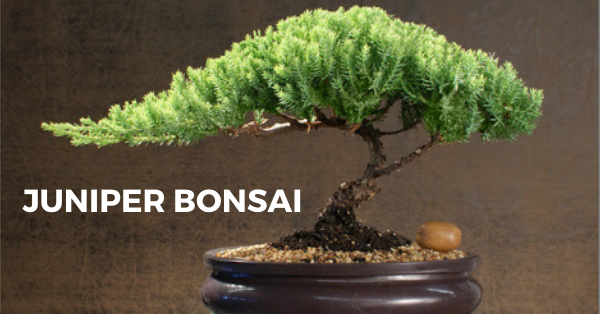
Another popular bonsai type is the Juniper. It has a very distinctive appearance and is often used in traditional Japanese gardens for this reason.
Junipers have interesting shapes, and are very easy to look after. They require little pruning, which means that the natural shape stays intact for a long time.
The appearance of juniper bonsai is also quite formal and refined.
Their sharp leaves contrast nicely with their dark green color. Since junipers have branches that grow in every direction, they need space around them.
The Trident Maple Bonsai
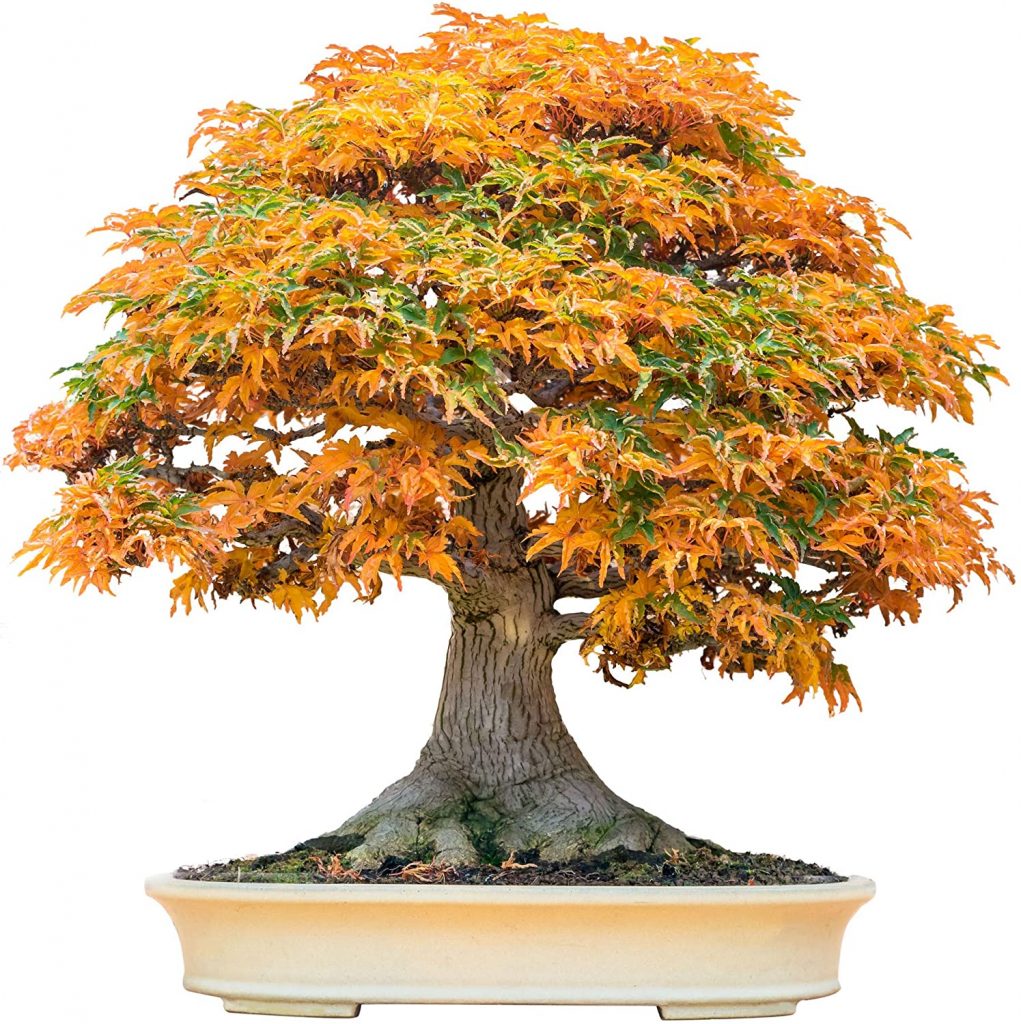
The Trident Maple Tree makes an excellent bonsai type for those who want to create a more naturalistic looking piece as it looks like it would grow naturally in nature rather than being cultivated by humans.
Trident maples are the most popular of the maple species when it comes to bonsai trees, because the shape and color is so distinct.
Tridents have a nice deep green foliage that contrasts nicely with the dark woody trunk.
The leaves grow in three fingers from the top of the branch and form a point at the end.
The Ficus Bonsai Tree
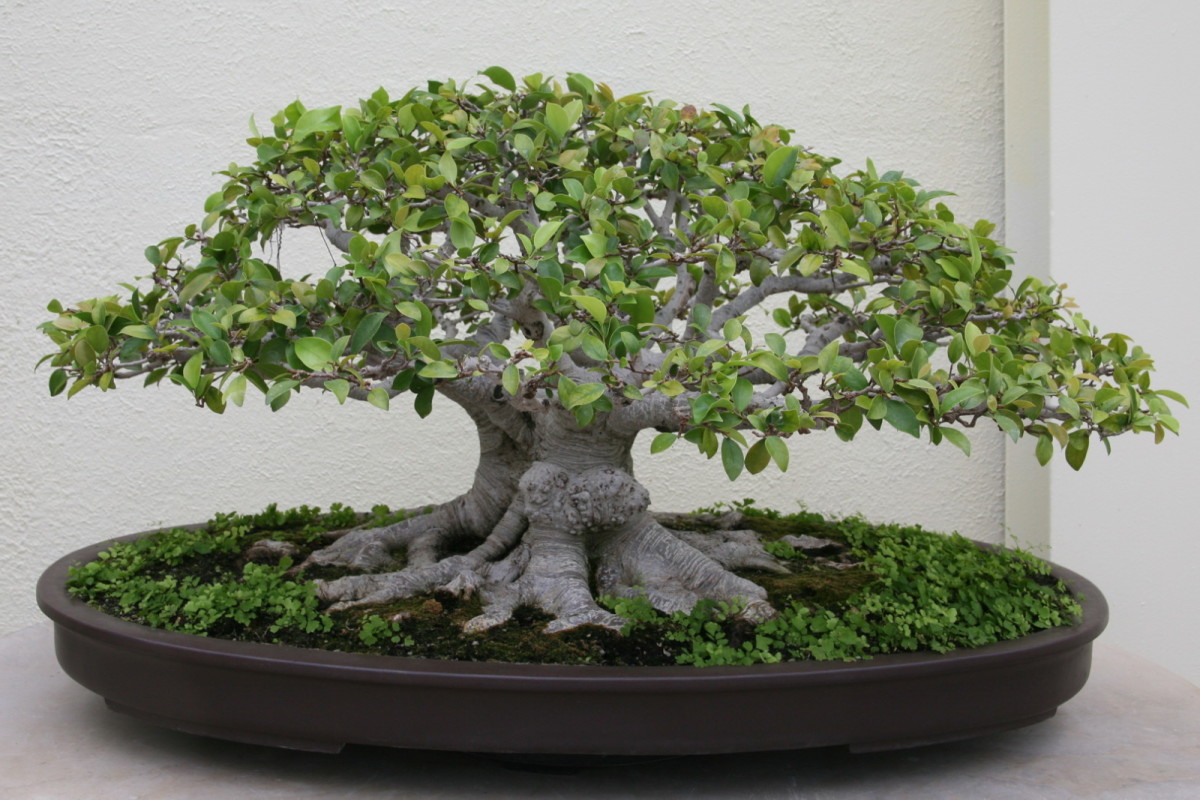
The ficus bonsai tree is a popular bonsai type for indoor gardening because they can be very easy to care for .
They are often sold as “seed” trees that already have the roots growing in. The only thing you need to do is find a beautiful container to keep it in.
The ficus bonsai tree has very dark, glossy leaves with an interesting shape . A well cared for ficus can live for decades.
Although they are suitable for beginners, the appearance of the ficus does not suit all types of homes or lifestyles.
The Japanese Maple Bonsai (bonsai types popular in Japan)

The Japanese maple bonsai tree is most appropriate for the beginner because it can suit many different environments and has distinctive, attractive leaves.
A Japanese maple can be shaped throughout its entire growing period, so there are no limits to what you can achieve with them.
Japanese maples may be one of the best species to choose for bonsais because they are very easy to care for.
They require little sunlight, and plenty of water. Their leaves color well even without much light and they can be kept indoors all year round.
Japanese maples can be found in a range of colors including reds, greens , yellows or oranges so you have many different options with japanese maple bonsais.
Some Japanese maples develop jagged edges on their leaves as they age which adds character to the leaf and helps it stand out from other bonsai species.
The Japanese maple is an evergreen tree that will keep its leaves all year round, so you can enjoy the colour of this tree.
Carmona Bonsai Tree

Do you have a green thumb? If yes, then congratulations! You are in for a treat with Carmona Bonsai tree.
It is easy to care for and maintain this bonsai plant because it requires low maintenance. Carmona Bonsai Tree can survive indoors or outside so there’s no need to worry about the harsh winter weather.
The best part of owning Carmona bonsai tree is that they produce beautiful flowers during the spring season. This will add to make your home look extra pretty!
So what are you waiting for? Start caring for your own beautiful Carmona Bonsai Tree today!
Pomegranate Bonsai Tree (bonsai types bearing fruit)
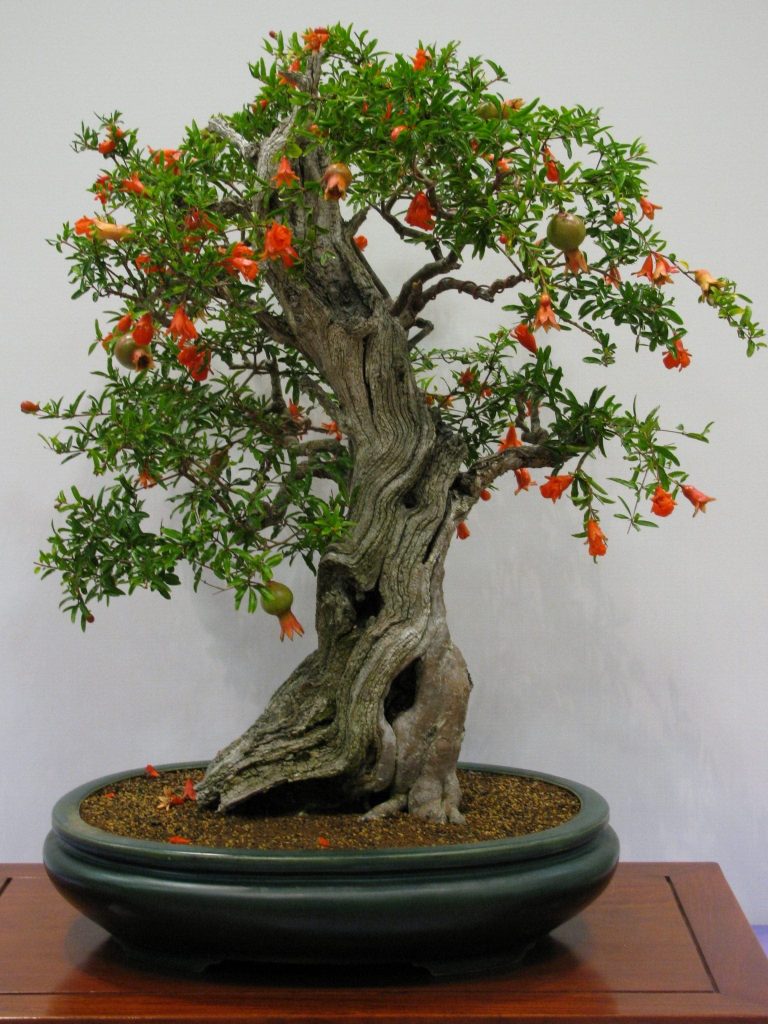
Bonsai trees are small plants that can be grown in containers and kept indoors.
They are considered miniature trees because they have a long lifespan, but the size is restricted by pruning or trimming.
Pomegranate bonsai tree enthusiasts love the fruit’s color, flavor, and curative properties which make it an excellent addition to their collection of potted plants.
It is important for bonsai tree owners to fertilize their little trees with organic compost tea every few weeks.
The roots need nutrients to grow properly and without them they will struggle to survive due to lack of nourishment. This article also provides tips on how you can help your plant thrive while still maintaining its miniature size!
When should you prune your bonsai tree?
The best time to prune your bonsai tree depends on the bonsai type you have, so make sure you research which one before attempting any pruning yourself!
If your japanese maple bonsai tree is pruned in the spring, it will allow your maple to grow new leaves and keep its shape before the summer months.
The pruning of deciduous trees like maples should be done in autumn or pruning can be in late winter early pruning bonsai maples.
It is important to keep your tree at the shape you want it to grow into, so make sure that prune regularly.
It is a good idea to prune your trees at least once a year, but pruning more than that can be fine if it is needed.
If you prune too much at any one time, then the tree may need some external help to promote regrowth.
What pruning tools to use
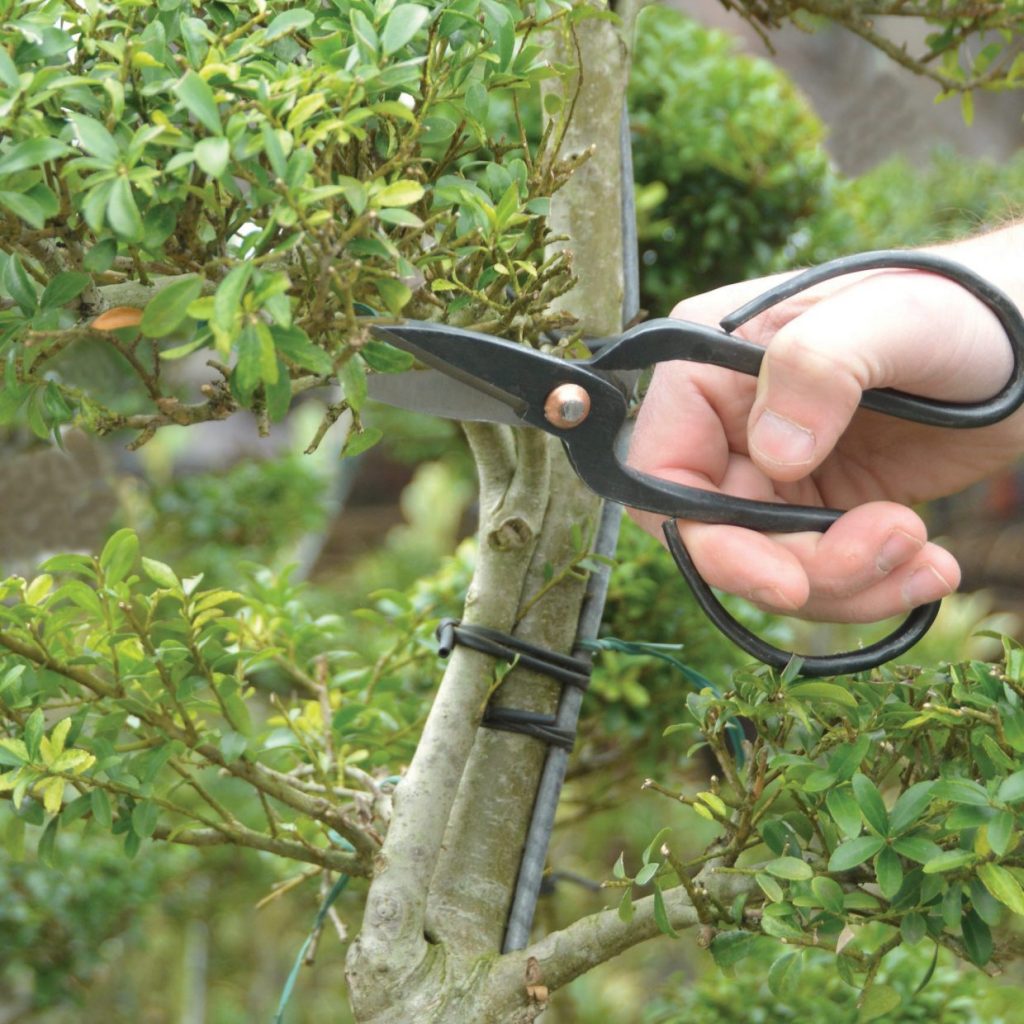
Green pruning Scissors are used to prune your bonsai tree.
These pruning scissors have very fine prongs that will not damage the tree when cutting the branches and they are flexible enough so you can prune away from the trunk of the tree.
If you ever misplace a prong on your green pruning shears, it can be replaced with a prong from any household scissors.
Green pruning shears should only ever be used on bonsai trees because they are very sharp, so make sure you keep them for this purpose and don’t use them anywhere else.
The pruning of bonsai is an art form that requires pruning skills.
What about watering?

Lastly, when watering your new plant make sure not to overwater or underwater them – they need just enough water to keep their soil moist but not soggy.
An easy way to test if your plant needs water is by sticking a finger into the soil, if it feels like there is moisture in the soil then don’t add more. If it’s dry and crumbly then you need to give them some water .
Keep an eye on your bonsai type while they are indoors because the light levels indoors are much less than outside resulting in the need to water them more.
If you have over or under watered your bonsai, it is important that you correct this as soon as possible!
Conclusion
There are many bonsai types. If you’re a beginner, it’s best to start with one that is hardy and easy-to-care for like the ficus tree or juniper.
As your experience grows, try more exotic species such as Japanese maple or weeping fig. Follow these tips, and soon you’ll have an army of exquisite miniature plants!
For more information about these plants please subscribe to our newsletter.
